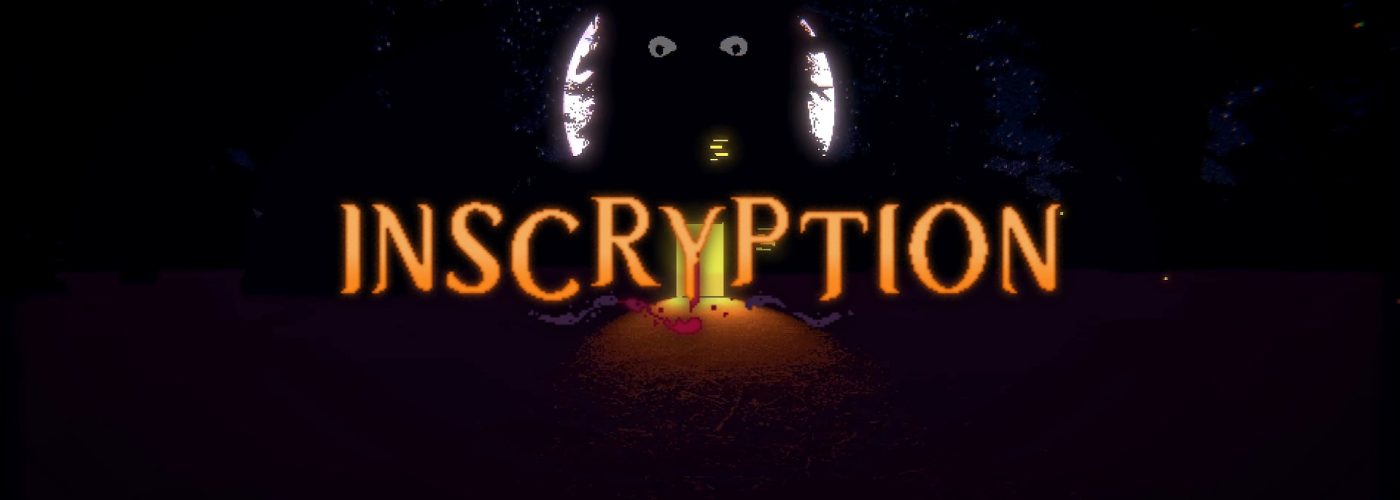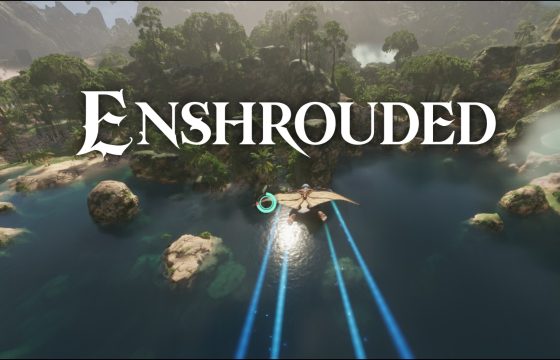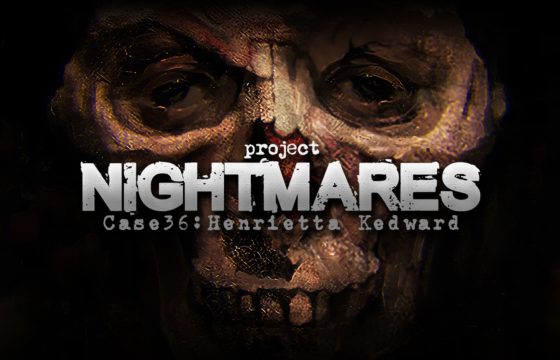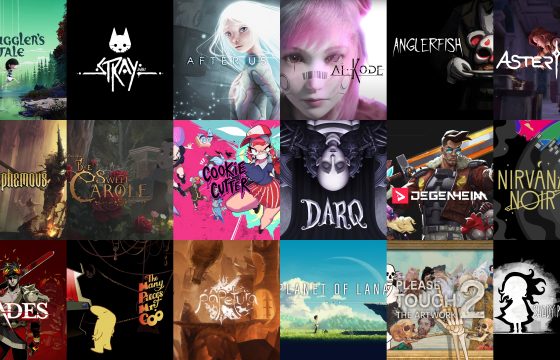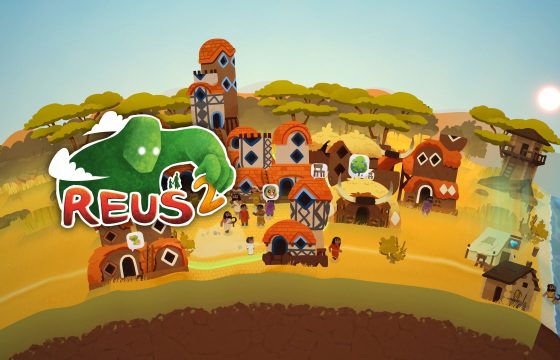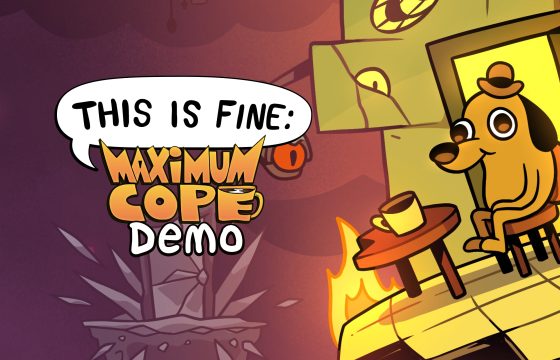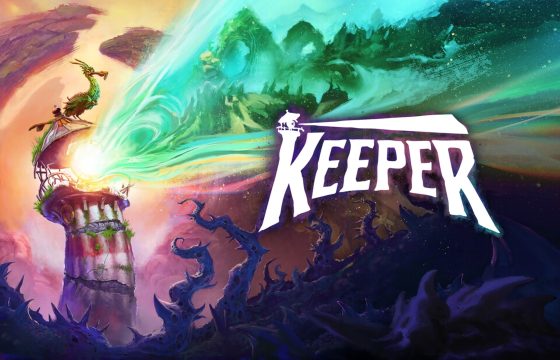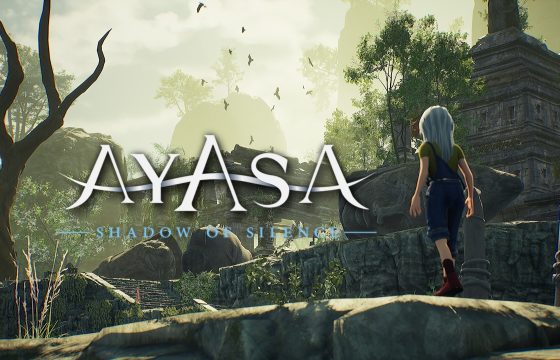Esoteric ritual disguised as a video game, Inscryption combines two great passions: card games and finding ourselves tied in a dark cabin, forced to play in order to break free.
Inscryption eluded Daniel Mullins Games surveillance on October 19, 2021, virally spreading on each and every platform: Windows, Linux, macOS, PlayStation 4, PlayStation 5, Nintendo Switch, Xbox One and Xbox Series X/S.
I found it on Steam by chance on a rainy day of thunder, lightning and tension towards the unknown. The “unknown” is a distinguishing mark of Inscryption, that poses as a deckbuilding game roguelike style, but it doesn’t tell it right and it doesn’t tell it all.
The soundtrack, made of low and discordant electronic sounds, creates an eerie atmosphere, and, while it drives us in, it invites to postpone our peace of mind until our next purchase.

MASKS AND SACRIFICES
From the beginning we are compelled to play by two hypnotic eyes, gazing from the shadows beyond the wooden table on which the match is held. The eyes wear masks, embodying the shady characters encountered along our imaginary journey throughout the forest. As a D&D master would portray nobles, yokels and merchants, these eyes portray the local inhabitants and their requests of sacrifices.
Sacrifice is indeed a core game mechanic, both during a match, in order to summon powerful creatures from the sacrifice of smaller ones, and outside of it, to permanently enhance some cards and terminate others from talking.
Some cards tend in fact to speak. Is it game-wise useful? No, but one becomes attached to sacrifice them.

For whom the little bell tolls
There is no UI and everything is eminently material. For example, a libra is entrusted with the contendants health points count – the more one hits the opponent the more teeth (yes, teeth) fall on his side of the libra until their weight will determine his defeat.
To pass the turn the player rings a little desk bell.
The player can influence the game using some tools and even them are 3D objects placed on the playing table, the whole room will reveal itself being not only context, but part of the gameplay. It is a conglomerate of little puzzles that will help us proceed along the narrative.
All of this contributes to Inscryption’s immersiveness, a rare trait for a video game the core of which is essentially made of card games and relative deckbuilding.

Once the forest cabin’s obstacles are overcome during the first game chapter, another cycle of not-so-unpleasant misfortunes awaits the player. In order not to lacerate with a flurry of spoilers the halo of mystery that shrouds the next events, I’ll refrain from unwrapping too much the rest of the story, and I’ll instead leave most of it in the hands of the reader’s intuition.
Our Not-So-Lucky Alter Ego
Parallel to our story, Inscryption discloses, through a handful of video footage, the vicissitudes of Luke Carder, a content creator keen on card games who perilously puts his hands on an Inscryption copy contained in a floppy disk. His story, shown on camera as if it were a B-movie in which the main character feels like looking forward to a miserable end, arouses the doubt that Inscryption is not only what it’s let us believe till now.

Act II
In fact, in the second chapter, the game aesthetics change radically, proposing a retro-game experience that even if it indulges in some mannerism, it is functional to the narration. We become then aware that the Inscription’s aims deviate from the mere amusement of the player, the game retraces in fact the base structures of the development itself of a certain type of video games. This developers’ inquiry seems a proper deconstruction of the drives that bring us to play card games and of their mechanics.
As if a programmer tried to pass from a higher programming language to the zeros and ones that atomically compose it.
Prisoners Again
This becomes even clearer in the third chapter, where we face another jailer who, like the first, will be our guide in our journey, this time towards a chimeric “Great Transcendence”. If we want that, the very files in our hard disk can influence the gameplay. And again, we’ll have permission to leave our prison-chair to have a look around the small rooms filled with puzzles that await us in our new dwelling.

Conclusion
As said previously, Inscryption asks itself questions about its genre and uses us as a mirror to carve a path within itself and see what there is at the bottom of a card game. It uses various game styles as a camouflage, mutates in order to peek at itself from another point of view and ends as any movie should end: giving a certain answer to the player and, at the same time, leaving him/her thirsty for the whole truth.
Inscryption
PRO
- Innovative, Balanced, and Multilevel Gameplay: the game combines deckbuilding elements with environmental puzzles, offering challenges of quality and in the right doses of difficulty.
- Engrossing Atmosphere: every visual and sound aspect combines like a well-coordinated orchestra, with the sole purpose of drawing us down the rabbit hole.
- Complex and Original Narration: the story is revealed in a fragmented but coherent way, leaving space for our interpretations without inexplicable black holes.
CON
- Second and Third Acts Do Not Match Up to the First: while the third act is similar to the first, albeit losing some of its mysterious atmosphere, the second act does not maintain the game’s masterful rhythm of the initial challenges, feeling more like a stylistic exercise than an integral part of the gameplay.
- Best Enjoyed in a Binge: Inscryption is held together by continuous references to its components, playing it in bits can cause one to lose the taste of a cohesive but at the same time too intricate narrative if played discontinuously.

